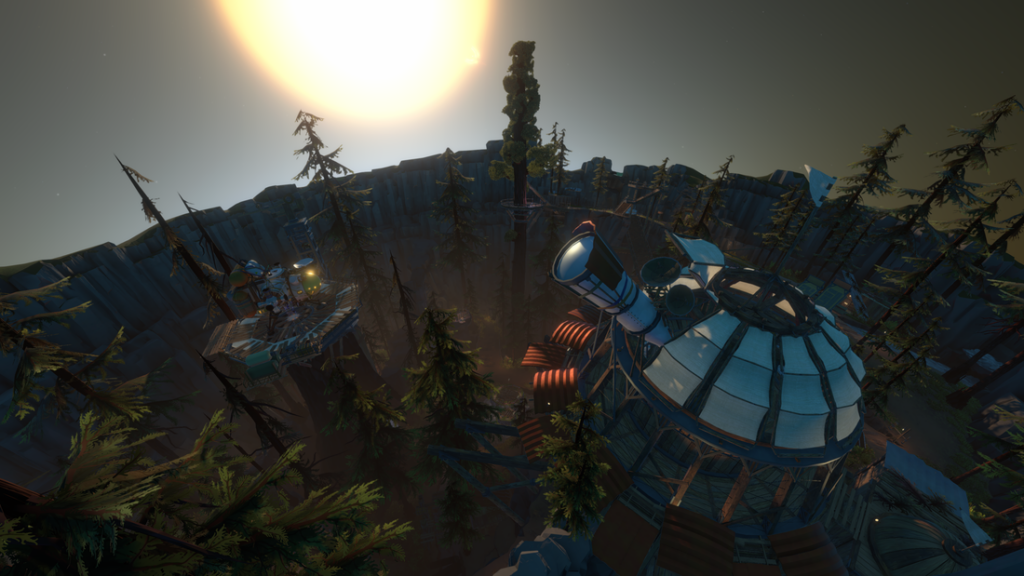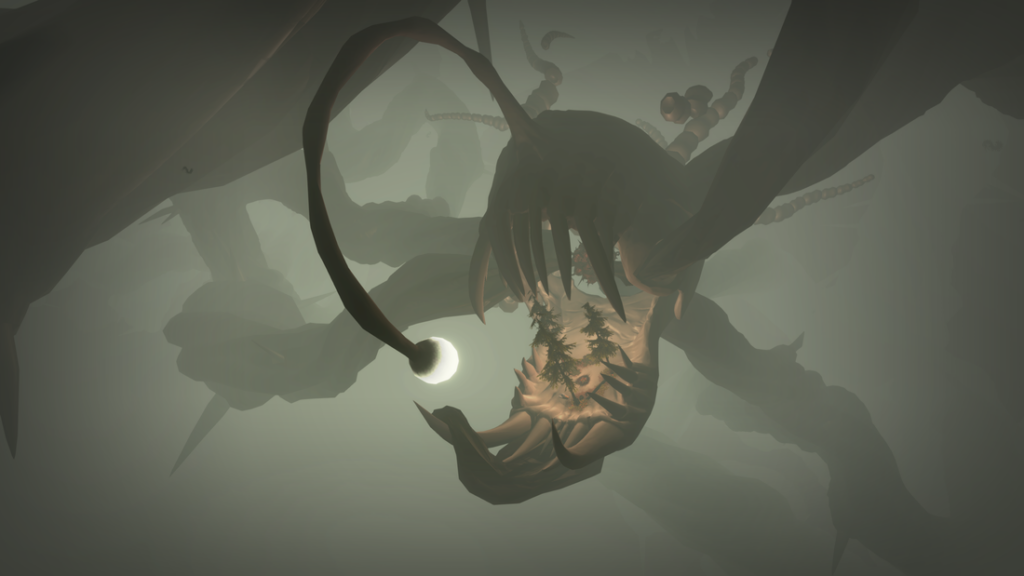Subjective
Developer Mobius Digital and publisher Annapurna Interactive presents Outer Wilds for review. Outer Wilds is a space adventure to solve the mystery of how to stop your solar system’s sun from going supernova.
Objective
Outer Wilds is a single player adventure game set in a fictional solar system. The player takes the role of an alien and takes flight in a rickety spacecraft to discover the mysteries of the universe. Gameplay centers around a 22-minute cycle after which the sun goes supernova and the player is sent back in time to the start. Outer Wilds was released in 2019 and is now available on PC, Xbox One, and PlayStation 4.

Assessment
I first played Outer Wilds with a few bits of background information. I knew the general setting, the time loop mechanic, and had a vague notion that some sort of mystery existed. What I didn’t know was the incredible level of care and detail at both the micro and macro levels of the game.
But even before pressing start I was immediately smitten by the menu theme and music. I don’t know how best to explain it, but the menu music has this nostalgic, familiar feel and it’s an amazing ambient tone despite being fairly short. I kept it playing for longer than I’d like to admit before beginning.
Outer Wilds starts with a campfire on a cozy settlement. Everything feels alive, lived in, genuine. There are people to talk to about your upcoming first flight into space. There are kids to play hide and seek with. There’s a cave without gravity so you can practice spacewalks.
Eventually the player makes their way to the observatory to get the launch codes for the spaceship. This ensures the player has a cutscene with a mysterious alien statue and spends a good bit of time on the starting planet to get their bearings. By my estimate, I spent about 20 minutes on the opening world.
I didn’t notice the huge size of the sun when I first launched into space. I did notice how small the starting world seemed as I shakily took my first flight into the stars. And about 30 seconds into that flight the sun exploded and I watched as the bright light enveloped me and sent me back to the campfire.
Death number one.

I wish I hadn’t known the time loop mechanic going into the game because that would have been a genuinely confusing and surprising moment. But I was aware and so I knew that this was the method that the game ensured I played for a set amount of time each loop. I wasn’t yet aware of why and how I was sent back, but while the universe went back in time, my character and my memories did not.
Second trip, I know what to expect and I’ve had my orientation. Armed with my launch codes from the original loop, I immediately run to the spaceship and take flight. I make way for a large blue/green world and don’t make it as I learn for the first time that autopilot will send you into the sun if you aren’t paying attention.
Death number two.
Back at the campfire. I run to the ship, carefully align myself before setting the autopilot, and make way for the blue/green world. Thankfully this world is a water planet and my first landing which would have normally killed me landed me without incident in the water. Shortly after coming ashore a cyclone rips the island into the upper atmosphere and I rocket upwards in panic. I break free of orbit and drift until my oxygen runs out.
Death number three.
This is the way the gameplay of Outer Wilds continues. In bits and pieces, by accident, tempered by the dumb courage that the game’s strange immortality grants you. In scattered fragments I learn about the aliens who came before and their quest to find a mysterious anomaly somewhere in the universe. I find grand pieces of large theoretical concepts and forgotten love notes on structures floating through space. This is a jigsaw puzzle with the pieces strewn across a solar system-sized box.

Outer Wilds does many things well, but the thing it does best is respect the player. It has been a long time since I felt actual wonder and accomplishment making progress throughout the universe. And the information is all there. The only thing blocking your progress is the knowledge of how to do so.
There are many situations where I felt this sense of accomplishment. One of the smaller moments involved a message stating that a team of aliens had found a cavern underneath the sunward facing side of a comet after receiving a strange energy signal. I was stumped. I landed on the comet and explored every part of its small surface. On another world I found a way to warp the alien ship that has crashed on the comet, thinking it would create a hole. No luck. So on one loop I flew to the comet, landed on the sunward side, and just stood there thinking.
And that’s when I heard the sound of ice cracking and melting. The trajectory of the comet took it very close to the sun and as it approached the sunward side melted, revealing for a short time the mysterious cavern below. The comet is made of ice. The ice moves close to heat. The ice melts. It’s a simple solution, but it’s couched in the cosmic dance of celestial bodies and orbits and it’s just masterfully done.
That cosmic dance is intrinsic to the game as you continue to explore. Some places are accessible at the beginning of a cycle, some places at the end. One structure can’t be accessed until it happens to fall into a black hole and teleports to the outer reaches of the solar system. Everything ticks smoothly into place like a great grandfather clock. It has the simultaneous effect of making everything feel crafted down to the smallest detail yet at the same time making you feel like you are nothing against this scale of cosmic time.

Capping the experience of eventually solving the mystery is a transcendent and impeccably crafted ending sequence. It combines science and the supernatural, and any further explanation would be a disservice to the sequence and to any future player.
While there are some rough edges and occasional glitches the player may encounter, the setting and folksy ambiance of Outer Wilds simply cannot be missed. It’s a game that unravels at the pace of the player, and, while it is mysterious, it is never inscrutable. After every moment I made progress I couldn’t help but smile at how simple and clever the ways forward were. Outer Wilds will be a gem of the gaming world for many years to come.
Outer Wilds was played on the PlayStation 4 using a reviewer purchased copy of the game.
The Review
Outer Wilds
Outer Wilds is a space mystery that has players trapped in a 22 minute time loop. There are clues to unravel across the solar system and every step closer you get to the solution makes you feel more like part of the very universe you’re trying to save.
PROS
- A universe that moves like a well crafted machine.
- Folksy music that helps give the game a feeling of Wild West Frontier against the blackness of space.
- Freedom to explore in the directions you want without artificial gameplay limitations.
CONS
- Some visual and clipping issues, especially when traveling at high speeds.
- Feeling under a timer can be a source of stress for some gamers.
- Missing a timed event can mean needing to spend a good bit of time to get the event on the next loop.



